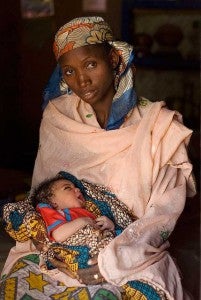This post is part of our Translating Research into Practice Series, which features guest posts from authors of the MHTF-PLoS open-access collections describing the impact of their research since publication.

Our paper—When Women Deliver with No One Present in Nigeria: Who, what, where and so what, published in the MHTF-PLOS Year Two collection—revealed that over one in five births in Nigeria was delivered with no one present (NOP) and 94% of those deliveries occurred in northern Nigeria. A woman’s age, increasing number of pregnancies, Muslim religion, and residence in northern Nigeria increased her risk of delivering alone. However, with greater economic status, decision-making power, and education women were less likely to deliver alone.
To decrease the number of NOP deliveries, we recommended an increase in women’s access to and control of disposable income through financial incentives and changes to the broader socioeconomic fabric. Our paper has shaped the discourse on maternal and newborn health in Nigeria in the following ways:
- Statewide community-based distribution of misoprostol and chlorhexidine links mothers to providers: The Ministries of Health in Bauchi and Sokoto States, Nigeria and the USAID/Targeted States High Impact Project (TSHIP) used the paper to advocate for the statewide, community-based distribution (CBD) of two life-saving commodities (misoprostol and chlorhexidine) by community-based health volunteers (CBHVs). The argument was made that CBHVs, who deliver these medicines, should maintain a presence during delivery and in turn connect mothers to emergency transport schemes. A preliminary analysis of the CBD program data by TSHIP showed that the proportion of women dying from delivery-related causes is fewer in study communities than in the general population.
- Policy dialogue involving local religious leaders: The paper was the basis of a policy dialogue with the Society of Gynaecologists and Obstetricians of Nigeria (SOGON) and Jama’tu Nasril Islam (JNI), Nigeria’s largest Islamic non-profit. A result of this policy dialogue was a call issued by JNI to all of its members in 27 of Nigeria’s 36 states to influence state governments, especially in northern Nigeria, to tackle NOP. JNI is playing an active role in raising consciousness about the undesirability of risky delivery practices throughout northern Nigeria. Engaging JNI has been critical since Muslim women are the most likely to give birth alone.
- Results presented at a panel hosted by Harvard: Given the influential nature of our paper, it was chosen as one of three presented at a launch event for the MHTF-PLOS collection in November 2013, hosted by the Harvard School of Public Health and the Maternal Health Task Force.
Locally, and globally, this paper has created a heightened awareness of the unacceptably low level of skilled birth attendance in Nigeria and the foment of new energy to address maternal and newborn health.
One may ask what is different about this paper that makes it appealing to users? The simple answer is that data are more likely to be used when their collection, analysis, and presentation are carefully planned. A review of the literature shows that research is highly accessed and applied if the following criteria are met:
- The research addresses needs and fills specific gaps
- Users have the skills to translate data into policy and programs
- Users are within organizations that have 1) technical skills to apply data to reframe old problems in new ways and 2) are situated in a favorable political climate supportive of data use
- Users and producers are linked through networks
- Data-use champions are ready to take research findings directly to policy and program audiences are available.
Since our paper’s publication, USAID/TSHIP has actively and strategically disseminated it to audiences with skills and political will to utilize the information. So much has happened since this phenomenon of women delivering alone was first identified by Dr. Nosakhare Orobaton in June 2012. Much more remains to be done.
< Nigerian mother and baby>©<2006>< Soumik Kar> used under a Creative Commons Attribution license:< https://creativecommons.org/licenses/by-nc/2.0/>
